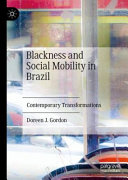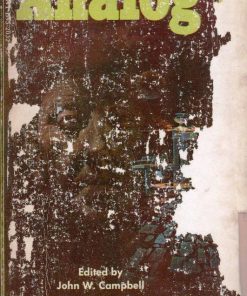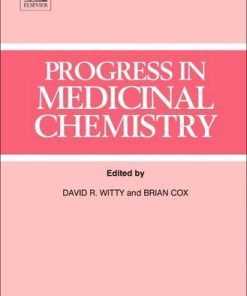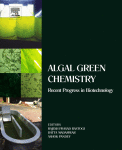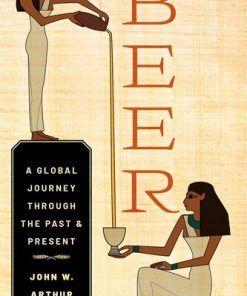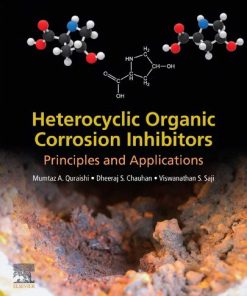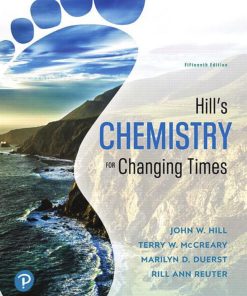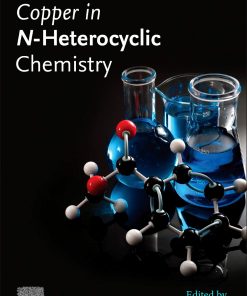Progress in Heterocyclic Chemistry 1st edition by Gordon Gribble, John Joule 0081023103 978-0081023105
$50.00 Original price was: $50.00.$25.00Current price is: $25.00.
Progress in Heterocyclic Chemistry 1st edition by Gordon W. Gribble, John A. Joule – Ebook PDF Instant Download/DeliveryISBN: 0081023103, 978-0081023105
Full download Progress in Heterocyclic Chemistry 1st edition after payment.
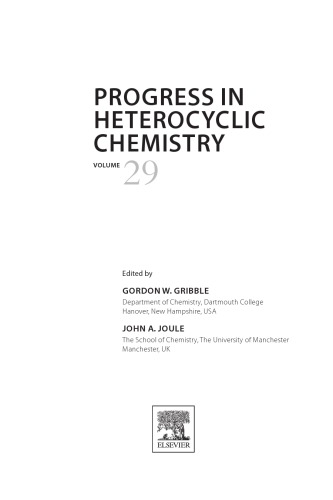
Product details:
ISBN-10 : 0081023103
ISBN-13 : 978-0081023105
Author : Gordon W. Gribble, John A. Joule
Progress in Heterocyclic Chemistry (PHC), Volume 29, is the latest in this annual review series commissioned by the International Society of Heterocyclic Chemistry (ISHC). Volumes in the series contain both highlights of the previous year’s literature on heterocyclic chemistry and articles on new developing topics of particular interest to heterocyclic chemists.
The highlight chapters in Volume 29are all written by leading researchers in their field and these chapters constitute a systematic survey of the important original material reported in the literature of heterocyclic chemistry in 2016. As with previous volumes in the series, Volume 29 will enable academic and industrial chemists, and advanced students, to keep abreast of developments in heterocyclic chemistry in a convenient way.
Progress in Heterocyclic Chemistry 1st Table of contents:
Chapter 1. Synthesis and chemistry of C-2 substituted 3,4-dihydropyrimidines of biological importance
1 Introduction
2 MCRs and DHPMs
3 Approaches for the synthesis of C-2 functionalized DHPM derivatives
3.1 Classical Biginelli approach
3.2 Atwal approach
3.3 Singh approach
3.4 Harsha’s novel approach of 4-MCR synthesis
4 Chemistry of C-2 functionalized DHPMs with biological importance
4.1 DHPM derivatives with C2-S modification
4.2 DHPM derivatives with C2-N modification
4.3 DHPM derivatives with C2-C modification
4.4 DHPM derivatives with C2-O modification
4.5 Structures of DHPMs fused with one or more rings
5 Biological importance of DHPMs
5.1 C-2 functionalized DHPMs as anticancer agents
5.2 C-2 functionalized DHPMs as antioxidant compounds
5.3 Antioxidants as an adjunct to anticancer treatment
5.4 C-2 functionalized DHPMs with antihypertensive (CCB) activity
5.5 C-2 functionalized DHPMs with antiviral activity
5.6 C-2 functionalized DHPMs with antimicrobial activity
5 Conclusion
Chapter 2. Three-membered ring systems
1 Introduction
2 Epoxides
2.1 Preparation of epoxides
2.2 Ring opening of epoxides
2.2.1 Applications to five-membered ring synthesis
2.2.2 Applications to six-membered ring synthesis
2.2.3 Applications to seven-membered ring systems
2.2.4 Regioselective ring-opening and linear extensions
3 Aziridines
3.1 Preparation of aziridines
3.2 Ring opening of aziridines
3.2.1 Application to four-membered ring synthesis
3.2.2 Application to five-membered ring synthesis
3.2.3 Applications to six-membered ring synthesis
3.2.4 Applications to seven-membered ring synthesis
3.2.5 Regioselective ring-opening and linear extensions
4 2H-azirines
Chapter 3. Four-membered ring systems
1 Introduction
2 Azetidines, azetines, and related systems
3 Monocyclic 2-azetidinones (β-lactams)
4 Fused β-lactams and spirocyclic β-lactams
5 Oxetanes, dioxetanes, and 2-oxetanones (β-lactones)
6 Sulfur, silicon, phosphorus heterocycles, and related systems: Miscellaneous
Chapter 4. Thiophene and benzo[b]thiophene
1 Introduction
2 Thiophene ring synthesis
3 Thiophene ring substitution
3.1 Substitution of thienyl-α-C-hydrogen (C2/C5)
3.2 Substitution of thienyl-β-C-hydrogen (C3)
3.3 Substitution of thienyl-C-boron/halogen/diazonium salt
3.4 α/β-carbon annulation/functionalization
4 Reactions at thiophene side chains
4.1 Benzo[b]thiophene
4.1.1 Benzo[b]thiophenes ring synthesis
5 Benzo[b]thiophenes reactions
5.1 Substitution of benzo[b]thiophene C2-hydrogen
5.2 Substitution of benzo[b]thiophene C3-hydrogen
5.3 Substitution of benzo[b]thiophene C-boron
5.4 C2/C3 annulation/functionalization
5.5 Functionalization of the benzo[b]thiophene benzene ring
6 Reactions at benzo[b]thiophene side chains
Chapter 5. Five-membered ring systems: Pyrroles and benzo analogs
1 Introduction
2 Synthesis of pyrroles
2.1 Intramolecular approaches to pyrroles
2.1.1 Intramolecular type a
2.1.2 Intramolecular type b
2.1.3 Intramolecular type c
2.2 Intermolecular approaches to pyrroles
2.2.1 Intermolecular type ac
2.2.2 Intermolecular type ad
2.2.3 Intermolecular type ae
2.2.4 Intermolecular type bd
2.2.5 Intermolecular type abc
2.2.6 Intermolecular type abd
2.2.7 Intermolecular type abe
2.2.8 Intermolecular type acd
2.2.9 Intermolecular type ace
2.2.10 Intermolecular type abde
2.3 Transformations of other heterocycles to pyrroles
3 Reactions of pyrroles
3.1 Substitutions at pyrrole carbon
3.1.1 Substitution at C2
3.1.2 Substitution at C3
3.1.3 Substitution at C2 and cyclization on pyrrole nitrogen
3.2 Cycloadditions
3.3 Functionalization of pyrrole side-chain substituents
4 Synthesis of indoles
4.1 Intramolecular approaches to indoles
4.1.1 Intramolecular type a
4.1.2 Intramolecular type b
4.1.3 Intramolecular type c
4.1.4 Intramolecular type e
4.1.5 Intramolecular type ac
4.2 Intermolecular approaches to indoles
4.2.1 Intermolecular type ab
4.2.2 Intermolecular type ac
4.2.3 Intermolecular type bc
4.2.4 Intermolecular type ae
4.2.5 Other intermolecular syntheses of indole
5 Reactions of indoles
5.1 Substitution at C2/C3
5.1.1 C2 substitution
5.1.2 C2 substitution, ring forming
5.1.3 C2–C3 annulation/functionalization
5.1.4 C3 substitution
5.1.5 C3 substitution, ring forming
5.2 Substitution at nitrogen
5.3 Functionalization of the benzene ring
5.3.1 C–H functionalization
5.3.2 From prefunctionalized indoles (e.g., halides, triflates, etc.)
6 Isatins, oxindoles, indoxyls, and spirooxindoles
7 Carbazoles
Chapter 6. Five-membered ring systems: Furans and benzofurans
1 Introduction
2 Furan ring synthesis
3 Furan ring substitution
4 Reactions at furan side-chains
5 Biological activity and photochemical properties of furans
6 Benzo[b]furan ring synthesis
7 Benzo[b]furan reactions
8 Biological activity and photochemical properties of benzo[b]furans
9 Dibenzofurans
Chapter 7. Five-membered ring systems: With more than 1N atom
1 Introduction
2 Pyrazoles and ring-fused derivatives
3 Imidazoles and ring-fused derivatives
4 1,2,3-Triazoles and ring-fused derivatives
5 1,2,4-Triazoles and ring-fused derivatives
6 Tetrazoles and ring-fused derivatives
Chapter 8. Five-membered ring systems: With O and S (Se, Te) atoms
1 1,3-Dioxoles and dioxolanes
2 1,3-Dithioles and dithiolanes
3 1,3-Oxathioles and oxathiolanes
4 1,2-Dioxolanes
5 1,2-Dithioles and dithiolanes
6 1,2-Oxathioles and oxathiolanes
7 Three heteroatoms
Chapter 9. Five-membered ring systems with O and N atoms
1 Isoxazoles
2 Isoxazolines
3 Isoxazolidines
4 Oxazoles
5 Oxazolines
6 Oxazolidines
7 Oxadiazoles
Chapter 10. Six-membered ring systems: Pyridines and benzo analogs
1 Introduction
2 Pyridines
2.1 Preparation of pyridines
2.2 Reactions of pyridines
3 Quinolines
3.1 Preparation of quinolines
3.2 Reactions of quinolines
4 Isoquinolines
4.1 Preparation of isoquinolines
4.2 Reactions of isoquinolines
Chapter 11. Six-membered ring systems: Diazines and benzo derivatives
1 Introduction
2 Pyridazines and benzo derivatives
2.1 Syntheses
2.2 Reactions
2.3 Applications
3 Pyrimidines and benzo derivatives
3.1 Syntheses
3.2 Reactions
3.3 Applications
4 Pyrazines and benzo derivatives
4.1 Syntheses
5 Reactions
5.1 Applications
Chapter 12. Triazines, tetrazines, and fused ring polyaza systems
1 Introduction
2 Triazines
2.1 1,2,3-Triazines or g-triazines
2.2 1,2,4-Triazines or a-triazines
2.2.1 a-Triazines in biochemistry
2.3 1,3,5-Triazines or s-triazines
2.3.1 Synthetic approaches
2.3.2 Fluorescence, delayed fluorescence, and related applications
2.3.3 Optically active triazines with other characteristics/objectives
2.3.4 Miscellaneous
3 Tetrazines
3.1 s-Tetrazines: Syntheses and reactivity
3.2 s-Tetrazines: Click chemistry
3.3 s-Tetrazines: Miscellaneous
3.3.1 Explosives
3.3.2 Materials
4 Heptazines
4.1 Heptazine-derived materials
4.2 Molecular heptazines and theoretical approaches
4.2.1 Polyaza systems
Chapter 13. Six-membered ring systems: With O and/or S atoms
1 Introduction
2 Heterocycles containing one oxygen atom
2.1 Pyrans
2.2 Chromenes and chromans
2.3 Isochromenes and isochromans
2.4 Pyranones
2.5 Coumarins
2.6 Chromones and chromanones
2.7 Xanthenes and xanthones
3 Heterocycles containing one sulfur atom
3.1 Thiopyrans and analogs
4 Heterocycles containing two or more oxygen atoms
4.1 Dioxanes
5 Heterocycles containing two sulfur atoms
5.1 Dithianes
6 Heterocycles containing both oxygen and sulfur in the same ring
6.1 Oxathianes
Chapter 14. Seven-membered ring systems
1 Azepines and benzo-fused derivatives
2 Oxepines and benzo-fused derivatives
3 Thiepines and benzo-fused derivatives
4 Diazepines and benzo-fused derivatives
5 Oxazepines and benzo-fused derivatives
6 Thiazepines and benzo-fused derivatives
7 Dioxepines and dithiepines
8 Thiadiazepines, triazepines, and tetraazepines
Chapter 15. Eight-membered and larger rings
1 Introduction
2 Carbon–oxygen rings
3 Carbon–sulfur rings
4 Carbon–nitrogen rings
5 Carbon–nitrogen–sulphur/tellurium rings
6 Carbon–sulfur–oxygen rings
7 Carbon–nitrogen–oxygen rings
8 Carbon–nitrogen–sulfur rings
9 Carbon–nitrogen–oxygen–boron rings
10 Carbon–oxygen–silicon rings
11 Carbon–nitrogen–sulfur–oxygen rings
12 Carbon–oxygen–metal ring
13 Carbon–sulfur–metal rings
14 Carbon–nitrogen–sulfur–metal rings
15 Carbon–nitrogen–metal rings
16 Carbon–nitrogen–oxygen–metal rings
17 Metal rings
People also search for Progress in Heterocyclic Chemistry 1st:
progress in heterocyclic chemistry 2021
progress in heterocyclic chemistry journal
advances in heterocyclic chemistry abbreviation
advances in heterocyclic chemistry alan r katritzky
progress in inorganic chemistry
Tags: Progress, Heterocyclic Chemistry, Gordon Gribble, John Joule
You may also like…
Uncategorized
Blackness and Social Mobility in Brazil 1st edition by Doreen Joy Gordon 3030907651 9783030907655
Housekeeping & Leisure - Games: Chess
1000 Mate in 1-2-3 Chess Puzzles Volume 1, John W. Edwards 2020-TLS John W. Edwards
Science (General)
Engineering
Chemistry - Chemistry - General & Miscellaneous
Chemistry - Organic Chemistry




